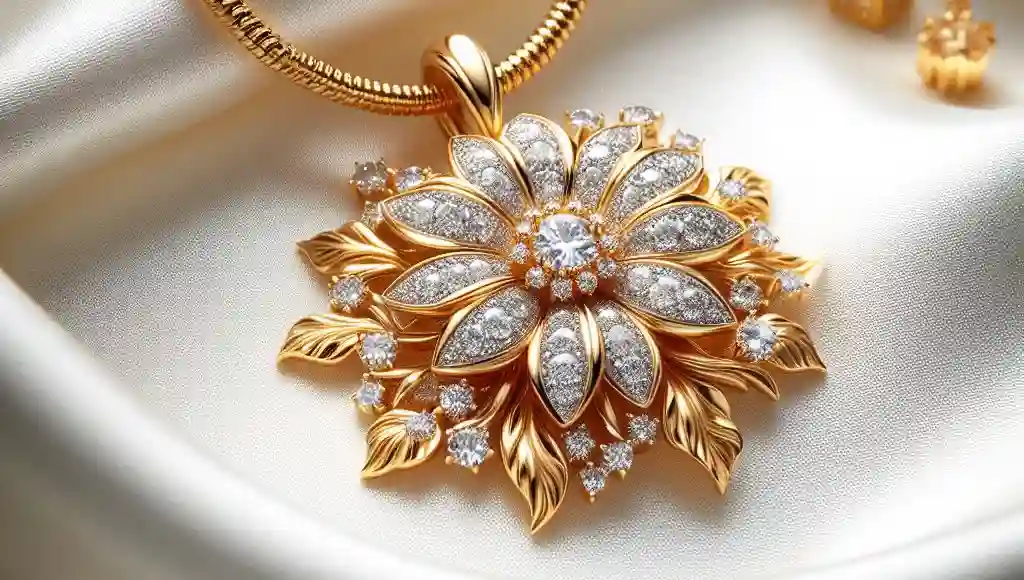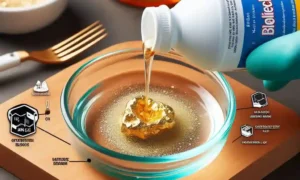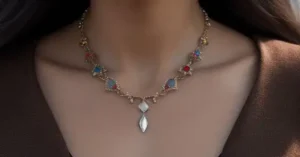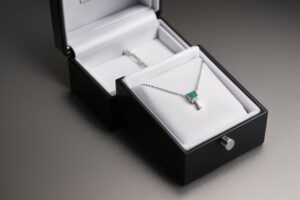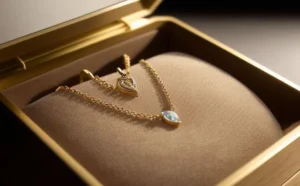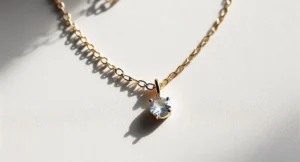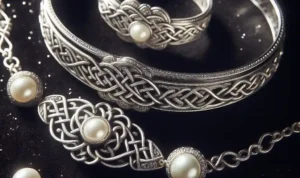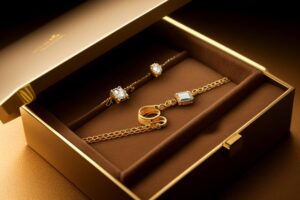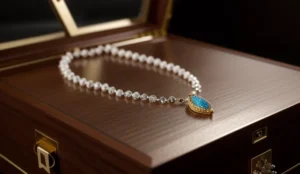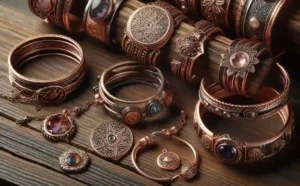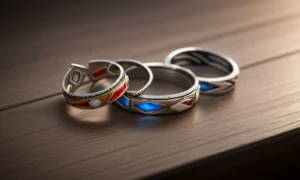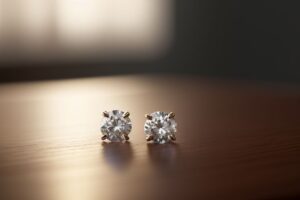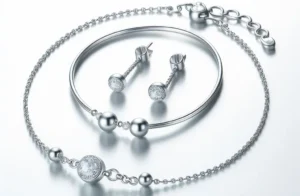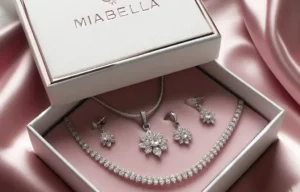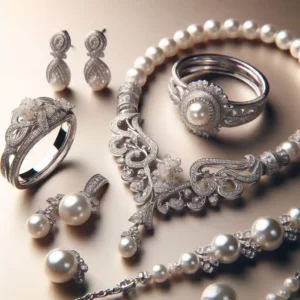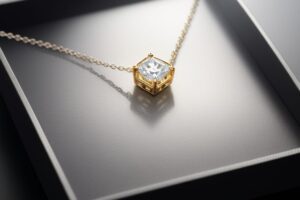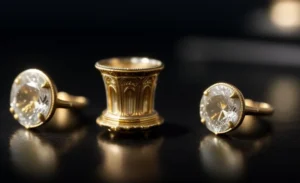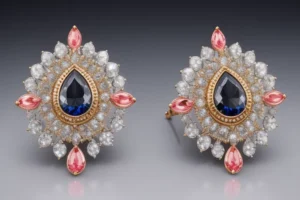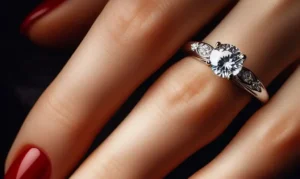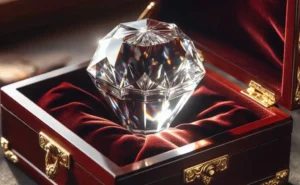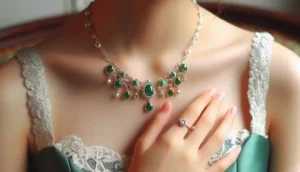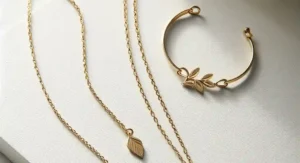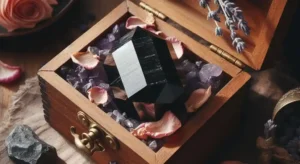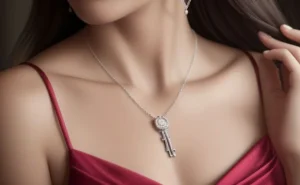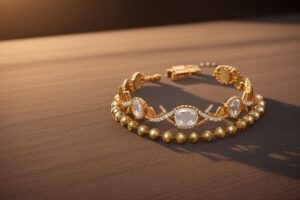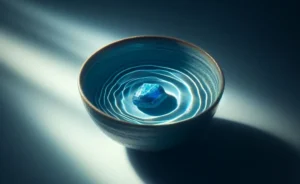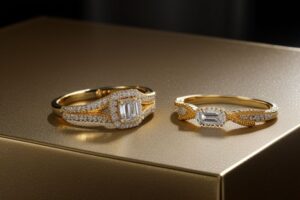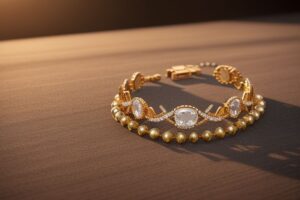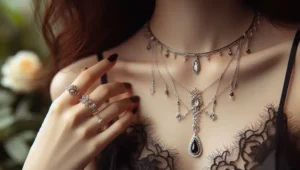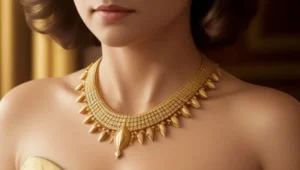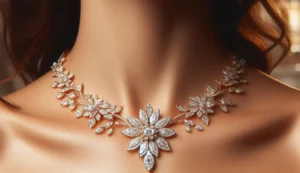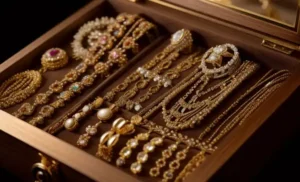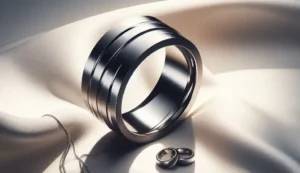Does 18k Gold Scratch Easily? Gold has always been a symbol of wealth and beauty, making it a favorite choice for jewelry enthusiasts worldwide. Among its many alloys, 18k gold holds a special place for its perfect balance between purity and practicality.
But a common question that arises among aficionados and prospective buyers is about its durability: Does 18k gold scratch easily?
In this comprehensive exploration, we delve into this question, providing insights into the composition, durability, and care of 18k gold jewelry, ensuring you make an informed decision for your next precious piece.
Does 18k Gold Scratch Easily?
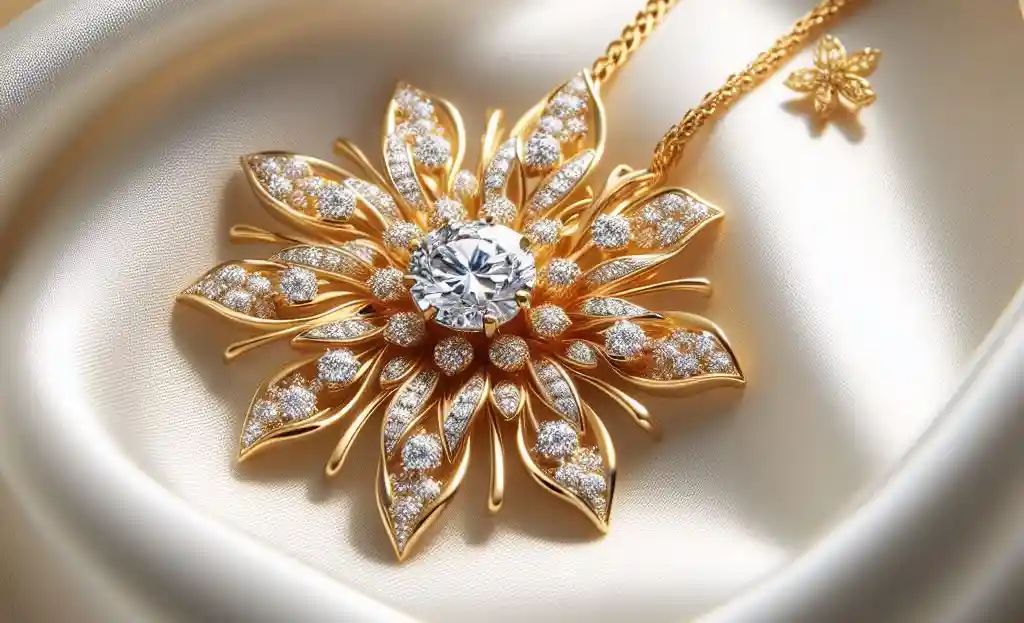
Yes, 18k gold can scratch relatively easily due to its higher gold content and inherent softness compared to alloys with a lower percentage of gold, such as 14k gold.
While the addition of other metals increases its durability over pure gold, 18k gold remains more susceptible to scratches and dents than many other jewelry metals.
Proper care and handling can mitigate this to some extent, but wearers should be prepared for the natural patina that develops from everyday use.
Understanding the Composition of 18k Gold
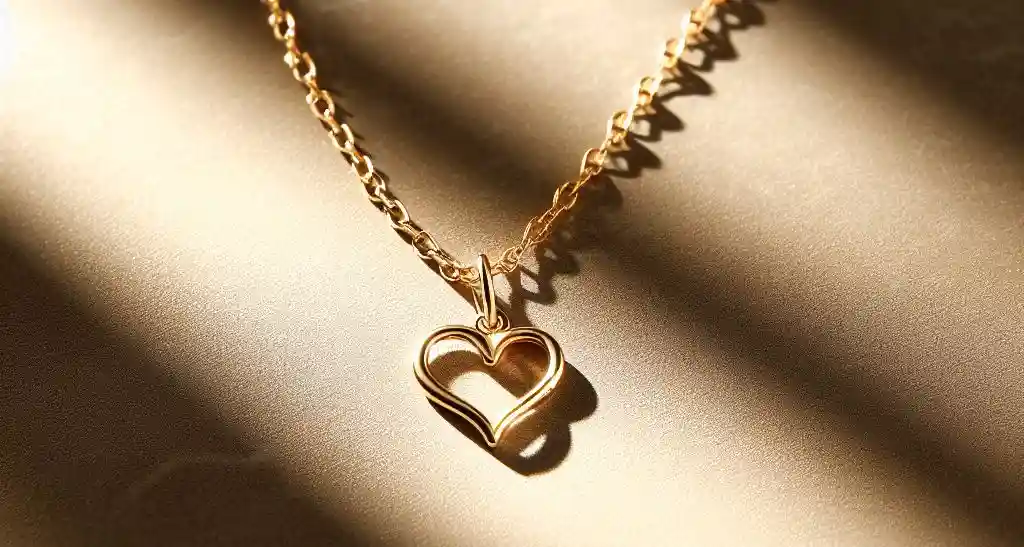
The unique composition of 18k gold is what sets it apart and defines its appeal in the world of jewelry. This alloy, which comprises 75% gold, achieves a harmonious blend by incorporating 25% of other metals.
These additional metals are not merely fillers but are carefully selected to enhance the alloy’s overall characteristics, including its strength, durability, and color variation.
The choice of these alloying metals can lead to a diverse range of 18k gold variants, such as yellow, white, and rose gold, each with its distinct appearance and allure.
In 18k yellow gold, silver and copper are added, which not only fortify the alloy but also preserve the rich, warm hue that gold is celebrated for. For 18k white gold, metals like palladium or nickel are introduced to achieve its signature silvery sheen.
This variant often receives a rhodium plating to enhance its whiteness and reflectivity. Meanwhile, 18k rose gold owes its beautiful pinkish tint to a higher proportion of copper, which also contributes to its slightly increased toughness.
This strategic mixture ensures that 18k gold maintains a delicate balance between the intrinsic value of gold and the practicalities required for daily wear and tear.
By understanding the thoughtful composition behind 18k gold, enthusiasts and prospective buyers can appreciate not only its beauty but also the craftsmanship that goes into creating durable and cherished pieces of jewelry.
The Durability Factor of 18k Gold
The concept of durability in 18k gold jewelry encompasses its capacity to endure the stresses of everyday wear without significant deterioration.
The alloy’s specific composition, predominantly gold with a judicious blend of other metals, imbues it with a durability that is commendable for items intended for regular use, such as engagement rings or everyday bracelets.
This inherent durability is a direct consequence of the meticulous balance struck between the softness of pure gold and the strengthening effect of added metals like copper and silver.
Consequently, 18k gold pieces exhibit a resistance to the corrosive effects that can tarnish or degrade lesser quality metals over time, ensuring that your cherished items maintain their integrity and aesthetic appeal.
However, it is imperative to recognize that this resilience does not render 18k gold invulnerable. Exposure to harsh environments or abrasive activities can indeed leave their mark, potentially in the form of scratches or minor deformations.
These manifestations of wear are not indicative of a material flaw but are rather a natural outcome of gold’s interaction with its surroundings.
Appreciating the balance between the alloy’s noble heritage and its physical limits can enhance one’s understanding of how best to care for and enjoy 18k gold jewelry, optimizing its lifespan while celebrating its beauty.
Comparing Scratch Resistance with Other Metals
In evaluating the scratch resistance of 18k gold against other frequently chosen metals for jewelry, it’s essential to consider the unique qualities each metal brings to the table.
Platinum, for instance, stands out for its superior durability and heft, but it’s also more prone to showing scratches, which, over time, contribute to a distinct patina that many find desirable for its vintage appeal.
This patina, while celebrated by some, might not align with the preferences of those who favor the original luster and shine of their pieces.
Turning our attention to 14k gold, with its increased alloy content, we find a material that inherently possesses a greater hardness compared to 18k gold. This characteristic renders 14k gold more adept at resisting scratches and minor damages from everyday wear.
However, this comes at the cost of the luxurious depth of color and the higher gold content that 18k gold proudly showcases. These comparisons underscore the importance of personal preferences and lifestyle considerations in selecting the right metal for one’s jewelry.
While some may prioritize the resilience and less frequent maintenance of 14k gold or platinum, others may value the richer gold appearance and prestige associated with 18k gold, accepting the trade-off in terms of scratch resistance.
The decision ultimately hinges on weighing these factors against individual expectations and the specific uses envisioned for the jewelry.
Tips for Minimizing Scratches on 18k Gold Jewelry
To help preserve the pristine condition of your 18k gold jewelry, engaging in preventative measures is key. First and foremost, be mindful of when you wear your jewelry; it’s advisable to remove it during physical activities or when working with abrasive materials that could potentially cause scratches.
This includes household chores, gardening, or any sports activities. Secondly, consider how you store your jewelry when it’s not being worn. Each piece should have its designated spot, preferably in a soft-lined compartment or pouch that offers protection from hard surfaces and prevents pieces from rubbing against each other.
Regular maintenance is also crucial. Gently cleaning your 18k gold jewelry with a specialized gold cleaning solution or a mild soap and lukewarm water can help maintain its luster and minimize the buildup of substances that could contribute to scratching.
Utilize a soft, non-abrasive cloth for drying and polishing to avoid inadvertently adding micro-scratches during the cleaning process.
Adopting these practices can significantly reduce the likelihood of scratches and ensure that your 18k gold jewelry continues to radiate its inherent beauty and elegance, keeping it as captivating as the day it was acquired.
The Importance of Professional Maintenance
Even with diligent care at home, seeking out professional maintenance for your 18k gold jewelry is a crucial step in preserving its beauty and longevity.
Jewelers possess specialized tools and cleaning solutions that are optimally formulated for treating gold, enabling them to remove grime and restore shine without causing damage.
Beyond cleaning, these experts can inspect your jewelry for any signs of wear or damage, such as loose settings or weakened clasps, that might not be visible to the untrained eye. Such preventative maintenance can avert potential losses or more extensive repairs in the future.
Moreover, professionals are adept at polishing out minor scratches that are inevitable with regular use, revitalizing your pieces to their near-original state. This service is particularly beneficial for items of sentimental value or significant investment, ensuring they continue to dazzle and delight for years to come.
Engaging in regular professional maintenance not only enhances the physical appearance of your 18k gold jewelry but also reinforces its structural integrity, making it an indispensable practice for any jewelry owner.
Embracing the Character of 18k Gold
In the journey of life, every scratch and mark on our 18k gold jewelry serves as a memento of our experiences, infusing each piece with a unique story that is profoundly personal.
The gradual accumulation of these tiny imperfections should not be viewed with dismay but rather embraced as the jewelry’s evolution alongside its wearer.
This perspective encourages us to appreciate the beauty in the perfectly imperfect, recognizing that these blemishes do not diminish the jewelry’s value but instead contribute to its character and depth.
Over time, 18k gold jewelry becomes more than just an accessory; it transforms into a cherished keepsake, rich with memories and emotions.
This natural aging process, where each scratch marks a moment in time, allows us to forge a deeper connection with our precious pieces, seeing them as faithful companions on our life’s journey.
As we continue to wear our 18k gold with pride and affection, we celebrate not just its aesthetic allure but also the resilience and stories it represents, making our bond with it all the more special.
Making the Right Choice for You
Selecting the appropriate type of gold for your jewelry is a deeply personal decision that should be informed by your unique circumstances and preferences.
For those who appreciate the allure of gold and desire a piece that combines both the luster of nearly pure gold with added durability, 18k gold presents a compelling choice.
It offers a richness in color and a degree of purity that is both visually appealing and practical for individuals who intend to wear their jewelry regularly.
When considering 18k gold, it’s important to reflect on your daily activities, the environments in which you spend your time, and how these factors might impact your jewelry. If your lifestyle involves tasks or hobbies that could expose your jewelry to rough conditions, understanding the maintenance and care required to preserve the beauty of 18k gold is essential.
Moreover, the decision should factor in the emotional value you place on a piece. Jewelry is not just an adornment but often a symbol of significant life moments or personal milestones.
As such, choosing a metal that resonates with you on a personal level and aligns with your aesthetic preferences will ensure that your jewelry remains cherished and meaningful.
Ultimately, the choice between 18k gold and other metals hinges on striking a balance between visual appeal, practicality, and emotional significance. Considering these aspects will guide you towards making a decision that best suits your needs, allowing you to enjoy your jewelry to the fullest.
FAQs
Q: How can I tell if my jewelry is made of 18k gold?
A: The simplest way to identify 18k gold jewelry is by looking for a hallmark or stamp that usually reads “18k”, “750”, or a similar variation, indicating the percentage of gold purity.
Q: Can 18k gold tarnish?
A: While 18k gold is highly resistant to tarnish due to its high gold content, it can still accumulate dirt and oils from the skin, which may cause it to appear less shiny over time. Regular cleaning can restore its luster.
Q: Is it possible to repair scratched 18k gold jewelry?
A: Yes, minor scratches can often be polished out by a professional jeweler. However, deep scratches might require more extensive repairs.
Q: How often should I have my 18k gold jewelry professionally cleaned?
A: It’s recommended to have it professionally cleaned and inspected at least once a year to maintain its beauty and ensure that any wear and tear is addressed.
Q: Can 18k gold be resized?
A: Yes, 18k gold can be resized by a skilled jeweler. The process involves either adding or removing small amounts of metal to achieve the desired fit.

